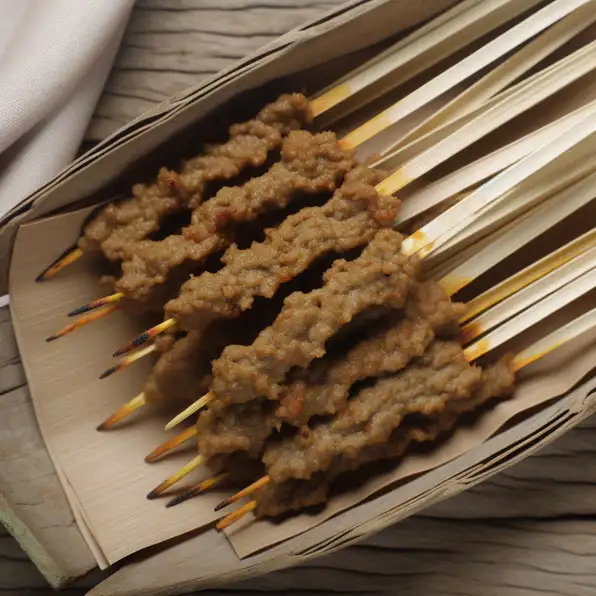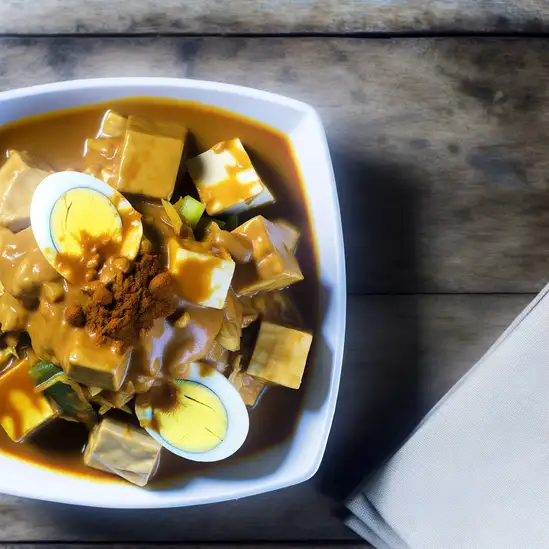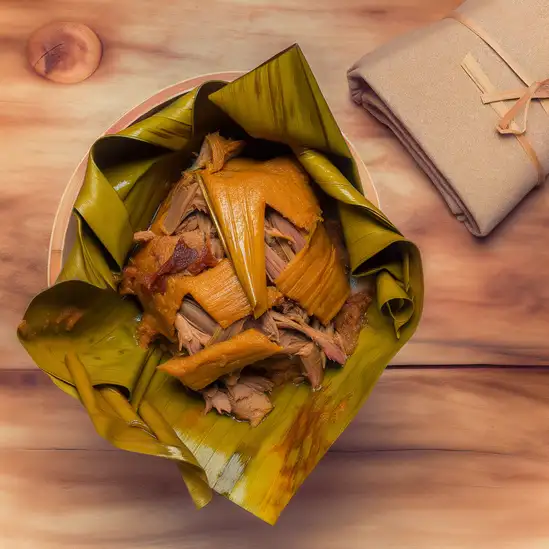


Denpasar has this vibrant,lived-in energy that instantly pulls you in. It’s not the polished tourist hub you might expect from Bali,but rather the bustling heart where locals go about their daily lives with warmth and rhythm. Walking through its streets,you’ll hear the hum of motorbikes weaving through traffic,the chatter of market vendors calling out fresh produce,and the occasional clang of temple bells weaving into the city’s soundtrack. The air carries a mix of fragrant spices,sizzling street food,and the earthy scent of incense from nearby shrines. What I love most about Denpasar is how it feels like a genuine slice of Balinese culture. The city pulses with tradition—colorful ceremonies unfold in the temples,and you’ll spot locals dressed in sarongs,carrying offerings with quiet reverence. At the same time,there’s a youthful buzz in the cafes and art spaces,where creativity bubbles alongside age-old customs. It’s a place where you can savor a plate of spicy babi guling from a humble warung,then wander through the art markets filled with intricate wood carvings and vibrant paintings. Denpasar invites you to slow down and soak in the everyday magic—the warmth of the people,the rich smells,and the lively streets. It’s a city that doesn’t shout for attention but rewards those who take the time to explore its layers. If you want to experience Bali beyond the beaches,Denpasar offers a genuine,colorful glimpse into the island’s soul.
The information on this page is currently being reviewed by Tripkliq and should be used as a guide only
Eng word: Hello
Eng pronunciation: HAH-loh
Local language: Halo
Eng word: Goodbye
Eng pronunciation: suh-LAH-maht TING-gahl
Local language: Selamat tinggal
Eng word: Thank you
Eng pronunciation: teh-REE-mah KAH-see
Local language: Terima kasih
Eng word: How much
Eng pronunciation: buh-RAH-pah
Local language: Berapa
Eng word: Toilet
Eng pronunciation: TOY-let
Local language: Toilet
Eng word: Help me
Eng pronunciation: TOH-long SAH-yah
Local language: Tolong saya
Eng word: Yes
Eng pronunciation: YAH
Local language: Ya
Eng word: No
Eng pronunciation: TEE-dahk
Local language: Tidak
Eng word: Excuse me
Eng pronunciation: puhr-MEE-see
Local language: Permisi
Denpasar was established as a city in 1788 and has grown to become the capital of Bali, Indonesia. It was originally a small town but has expanded significantly over the years.
The Puputan Badung Monument commemorates the heroic battle of 1906, where the Balinese royal family and their followers chose to fight to the death rather than surrender to Dutch colonial forces.
The Bajra Sandhi Monument, located in the heart of Denpasar, is dedicated to the struggles of the Balinese people throughout history. It is a popular tourist attraction and a symbol of Balinese resilience.
Denpasar is a cultural hub in Bali, hosting numerous traditional ceremonies, festivals, and arts. The city is known for its vibrant cultural scene, including dance, music, and crafts.
The Denpasar Market, also known as Pasar Badung, is the largest traditional market in Bali. It offers a wide variety of local goods, from fresh produce to traditional Balinese textiles and crafts.
Museum Bali, located in Denpasar, showcases the rich history and culture of Bali. It features a vast collection of artifacts, including traditional costumes, religious items, and historical documents.
Over the past few decades, Denpasar has transformed from a small town into a bustling city. It is now a major economic and administrative center in Bali, attracting both tourists and businesses.
Pura Jagatnatha is a significant Hindu temple in Denpasar, dedicated to the supreme god Sanghyang Widi. The temple is known for its beautiful architecture and is a place of worship and cultural significance.
Denpasar is home to several prominent educational institutions, including Udayana University, which is one of the leading universities in Indonesia. The city is a center for higher education in Bali.
In Denpasar, the most common Power Adaptor is Type C, Type F.



A traditional Balinese dish of roasted suckling pig, marinated with a mixture of spices and served with rice and vegetables.

A Balinese version of satay made from minced meat mixed with grated coconut and spices, wrapped around bamboo sticks and grilled.

A traditional mix made from vegetables, coconut, and minced meat, often flavored with herbs and spices, served as a side dish.

A mixed rice dish served with a variety of side dishes, including meats, vegetables, and sambal, offering a taste of different flavors in one meal.

A salad of boiled vegetables, tofu, and hard-boiled eggs, served with a rich peanut sauce, popular as a vegetarian option.

Similar to Bebek Betutu, this dish features chicken marinated with a blend of spices, wrapped in banana leaves, and slow-cooked to perfection.

Slow-cooked duck stuffed with spices and wrapped in banana leaves, resulting in tender meat infused with rich flavors.

Traditional Balinese snacks or cakes made from rice flour and coconut, often served during ceremonies and festivals.
If you find yourself wandering through Kota Administrasi Jakarta Pusat,you’ll immediately notice the pulse of a city that’s both historic and buzzing with modern energy. It’s a place where colonial-era buildings stand shoulder to shoulder with sleek skyscrapers,creating a fascinating blend of old and new. Walking down the streets,you can almost hear the echoes of history mingling with the chatter of office workers and street vendors. The air carries a mix of aromas—from the rich,spicy scent of street food stalls grilling satay to the faint,comforting smell of freshly brewed kopi from tiny warungs tucked in corners.
What really makes Jakarta Pusat special is its vibrant character. It’s the heart of the city’s administrative and cultural life,so you’ll find a lively mix of people—government officials,artists,students,and families—all weaving their stories into the urban fabric. The bustling markets,like Pasar Baru,invite you to haggle over colorful textiles and local snacks,while nearby museums and galleries offer a quiet retreat into Indonesia’s rich heritage.
There’s a rhythm here that’s both fast-paced and inviting. Whether you’re sipping a sweet es cendol under the shade of a tree in Merdeka Square or catching the golden light reflecting off the National Monument at dusk,Jakarta Pusat feels alive in a way that’s deeply human and endlessly fascinating. It’s a city that invites you to slow down,look around,and soak in the layers of life unfolding all at once.
Imagine stepping into a city where sleek skyscrapers meet lush greenery,and every corner hums with a vibrant energy that’s both modern and deeply rooted in tradition. That’s Singapore for you—a place where the air carries the fragrant mix of blooming orchids and sizzling street food,and the streets buzz with a blend of languages and laughter. Walking through neighborhoods like Chinatown or Little India,you’ll catch the rich aromas of spices mingling with the sweet scent of tropical fruits,inviting you to explore further.
What’s truly captivating about Singapore is how effortlessly it balances the fast-paced pulse of a global hub with pockets of serene beauty. You can be wandering through the futuristic Gardens by the Bay one moment,marveling at the towering Supertrees glowing softly at dusk,and the next,find yourself savoring a bowl of laksa or chili crab at a bustling hawker center,surrounded by locals chatting animatedly. The city’s character shines through its people—warm,diverse,and proud of their heritage,yet always welcoming.
There’s a rhythm here that’s both energizing and comforting. Whether you’re cycling along the waterfront,catching a sunset over Marina Bay Sands,or simply sipping kopi in a cozy café,Singapore invites you to slow down and soak in its unique blend of cultures,flavors,and sights. It’s a city that surprises you with its layers,making every visit feel like a new discovery.
Bangkok is one of those cities that grabs you the moment you step out into its bustling streets. There’s this electric energy in the air—a mix of honking tuk-tuks,sizzling street food stalls,and the chatter of locals weaving through markets. The city feels alive,like it’s constantly moving and breathing,yet somehow it balances this chaos with moments of serene beauty,like the golden spires of temples catching the afternoon sun or quiet canals reflecting the sky.
Walking through Bangkok,you’ll be hit by a whirlwind of scents:fragrant jasmine from flower vendors,the sharp tang of lemongrass and chili from street carts,and the sweet aroma of mango sticky rice tempting you at every corner. The colors are just as vivid—neon signs flicker alongside traditional wooden shophouses,and monks in saffron robes glide past modern skyscrapers. It’s a city where old and new dance together effortlessly.
What really makes Bangkok special is its warmth and openness. The people here have a genuine kindness that shines through,whether you’re bargaining at Chatuchak Market or sharing a laugh over a bowl of spicy boat noodles. The culture is rich and layered,from the intricate rituals at Wat Pho to the lively festivals that light up the streets. Visiting Bangkok feels like stepping into a story that’s still unfolding,full of surprises and moments that stay with you long after you leave.
Manila is this vibrant,bustling heart of the Philippines that grabs you the moment you step off the plane. There’s an energy here that’s both chaotic and warm,like the city is alive and breathing with stories waiting to be discovered. Walking through its streets,you’ll catch the scent of sizzling street food mingling with the salty breeze from Manila Bay. The soundscape is a lively mix of jeepneys honking,street vendors calling out their wares,and the occasional laughter spilling from a nearby sari-sari store.
What makes Manila truly special is its rich tapestry of history and culture woven into everyday life. You can wander through Intramuros,the old walled city,and feel the echoes of Spanish colonial days in the cobblestone streets and centuries-old churches. Then,just a few blocks away,modern skyscrapers rise,showcasing the city’s dynamic spirit. The people here are incredibly warm and welcoming,always ready to share a story or recommend their favorite spot for halo-halo,a sweet,icy treat that’s perfect for cooling down in the tropical heat.
Manila’s charm lies in its contrasts—the old and new,the quiet moments in hidden courtyards and the lively buzz of night markets. It’s a place where you can savor rich Filipino flavors,dive into vibrant festivals,and feel the pulse of a city that’s constantly evolving but never loses its heart. If you want a trip that’s full of life,color,and genuine warmth,Manila’s waiting with open arms.
Kuala Lumpur feels like a vibrant heartbeat pulsing through the heart of Malaysia—where tradition and modernity dance effortlessly together. The moment you step into the city,you’re greeted by the towering silhouettes of the Petronas Twin Towers piercing the sky,their glass facades shimmering against the tropical sun. But it’s not just the skyline that captivates you; it’s the lively street scenes below. The air buzzes with the chatter of street vendors,the sizzle of satay grilling over open flames,and the sweet aroma of pandan and lemongrass wafting from bustling food stalls.
Walking through neighborhoods like Bukit Bintang or Chinatown,you’ll find a kaleidoscope of colors and sounds—vibrant markets brimming with spices,textiles,and handcrafted trinkets,while the calls to prayer from nearby mosques blend harmoniously with the hum of city life. The city’s rich cultural tapestry is woven from Malay,Chinese,and Indian influences,creating a unique blend you can taste in every bite of nasi lemak or teh tarik.
What I love most is how Kuala Lumpur never feels rushed. Whether you’re sipping kopi at a roadside stall or wandering through the lush greenery of the KL Forest Eco Park,there’s a warm,welcoming energy that invites you to slow down and soak it all in. It’s a city that surprises you at every turn—full of contrasts,flavors,and stories waiting to be discovered.
Sydney feels like a city that’s alive in every sense—vibrant,sun-kissed,and effortlessly cool. From the moment you step out near the harbor,you’re greeted by the salty tang of the ocean mingling with the scent of fresh coffee wafting from nearby cafés. The iconic sails of the Opera House catch the sunlight,shimmering against the deep blue of the harbor,while ferries chug by,their horns echoing softly across the water. It’s a place where the city’s energy hums alongside the natural beauty,creating this unique rhythm that’s both invigorating and laid-back.
Walking through neighborhoods like Surry Hills or Newtown,you’ll hear a mix of street musicians,chatter from bustling markets,and the clinking of glasses from cozy pubs. The streets are alive with colorful murals and the aroma of diverse cuisines—spicy Thai,fresh seafood,and rich,buttery pastries. Sydney’s character is a blend of its Indigenous heritage,colonial history,and a modern multicultural vibe that feels warm and welcoming.
What really makes Sydney stand out is how seamlessly urban life meets nature. You can be sipping a flat white in a sunlit café,then,within minutes,find yourself wandering along a cliffside trail with panoramic views of the Pacific Ocean. The city invites you to slow down and soak it all in—the laughter,the sea breeze,the golden light at dusk. It’s a place that stays with you long after you leave,making you want to come back and discover even more.
Tourists are charged excessive fees for renting beach chairs, umbrellas, or water sports equipment, sometimes with hidden costs.
Money changers offer attractive exchange rates but shortchange tourists by using sleight of hand or hidden fees.
Scammers sell counterfeit tickets to popular attractions, leaving tourists unable to enter upon arrival.
Unlicensed guides approach tourists at attractions, offering misleading or inaccurate information for a fee.
Scammers posing as police officers stop tourists and demand on-the-spot cash fines for fabricated traffic violations.
Tourists are charged for pre-existing damage to rented motorbikes or are forced to pay inflated repair fees for minor scratches.
Vendors in tourist-heavy areas inflate prices significantly, especially if tourists are unfamiliar with local pricing.
Thieves target tourists in crowded areas or on motorbikes, snatching bags, phones, or wallets.
Drivers refuse to use meters and charge exorbitant fares, especially for airport pickups or popular tourist destinations.
Tourists are sold fake or subpar tour packages that do not deliver the promised experiences or services.
Indonesia has very strict drug laws, and Denpasar is no exception. The possession, use, or trafficking of illegal drugs can result in severe penalties, including long prison sentences and even the death penalty. Tourists should avoid any involvement with illegal drugs and be cautious about the substances they bring into the country, including prescription medications, which should be accompanied by a doctor's note.
In Denpasar, Indonesia, smoking is regulated by both national and local laws. Smoking is prohibited in public places such as schools, hospitals, public transportation, and government buildings. There are designated smoking areas in some public places, but tourists should always look for signs indicating whether smoking is allowed. Violations can result in fines.
Vaping is subject to similar regulations as smoking in Denpasar. It is prohibited in public places where smoking is banned. While vaping is not as widely regulated as smoking, it is advisable to follow the same rules to avoid any legal issues. Always look for designated areas for vaping.
What are other people saying about Denpasar?
Recent Social posts about Denpasar
There is nothing to show you for now.